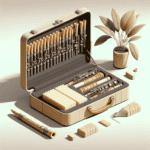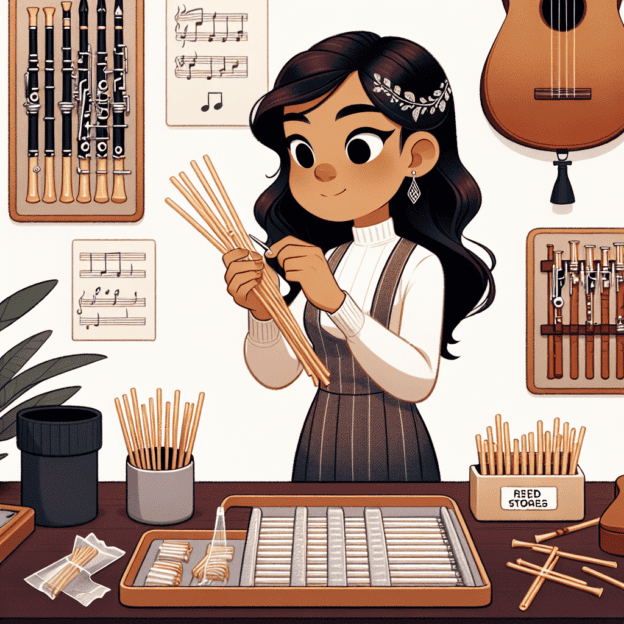As a clarinet player, you understand the importance of your reeds in creating beautiful music. Keeping your reeds in prime condition is key to delivering your best performance. One of the most significant factors in reed maintenance is controlling humidity during storage. This article will explore why humidity control matters, offer effective storage solutions, and provide practical tips for maintaining your clarinet reeds.
Why Humidity Matters for Clarinet Reeds
Clarinet reeds are crafted from natural cane, making them highly responsive to moisture levels. Both high and low humidity can negatively impact your reeds' playability and longevity:
- High Humidity: Too much moisture can cause reeds to swell, becoming softer and more susceptible to breaking. Overly wet reeds may also struggle to vibrate properly, resulting in a lackluster tone.
- Low Humidity: On the other hand, insufficient humidity can dry out reeds, leading to brittleness and reduced responsiveness. Dry reeds are typically harder to play and may warp or crack if left unchecked.
Understanding the Ideal Humidity Level
For optimal performance, clarinet reeds should be stored in an environment with humidity levels between 30% and 60%. Here's how you can maintain this range:
- Hygrometer: Invest in a hygrometer to keep tabs on the humidity in your storage area. This tool measures air moisture, helping you make smart decisions about reed storage.
- Climate Control: If you reside in an area with extreme humidity, consider using a humidifier or dehumidifier to create a suitable environment for your reeds.
| Humidity Level | Effect on Reeds | Recommended Action |
|---|---|---|
| Below 30% | Drying out, brittleness | Use a humidifier |
| 30% – 60% | Optimal condition | Maintain current environment |
| Above 60% | Swelling, softness | Use a dehumidifier |
Reed Storage Options
Several effective methods exist for storing your reeds. Here are some popular choices:
- Reed Cases: A dedicated reed case offers safe storage for your reeds. Many cases include humidity control packs to maintain optimal moisture levels.
- Plastic Containers: Airtight plastic containers with humidity packs can be quite effective. Remember to check humidity levels regularly.
- Reed Holders: Some musicians prefer reed holders with individual reed cutouts. While these provide protection, keep an eye on moisture levels as they expose reeds to the surrounding environment.
Maintaining Reeds in Optimal Condition
Proper storage is just the beginning; ongoing maintenance is equally crucial. Consider these tips:
- Soaking: Always soak your reeds before playing. This process enhances flexibility and tone quality. Soak for 5 to 30 minutes before use, depending on the reed and your personal preference.
- Rotation: Switch between multiple reeds during practice and performance. This distributes wear and tear, allowing each reed to rest and maintain its best qualities for longer.
- Regular Checks: Inspect your reeds often for signs of wear, cracking, or discoloration. Catching damage early allows you to address issues before they affect your playing.
Tips for Long-Term Storage
If you're not planning to use your reeds for an extended period, it's important to store them properly to prevent drying out or becoming overly humid. Consider these strategies:
- Damp Cloth Wrap: For long-term storage, wrap reeds in a slightly damp cloth and place them in a zip-lock bag. This method keeps them hydrated without oversaturating.
- Cool, Dark Location: Store your reeds in a cool, dark closet away from direct sunlight and heat sources. Extreme temperatures can cause reeds to warp.
- Reed Guards: Some players use reed guards for extra protection during travel or longer storage periods. These guards provide a slight bend to allow ventilation while keeping the reed safe.
Experiment and Adjust
Every clarinet player has unique preferences for reed care. Try different humidity levels and storage methods to find what works best for you. With time, you'll develop a reliable routine for maintaining your clarinet reeds that extends their lifespan and improves your performance.
By fine-tuning your reed management skills, you'll be well on your way to achieving greater clarity and responsiveness in your clarinet sound. Put these strategies into practice, and feel free to explore specialized options that complement your playing style.







